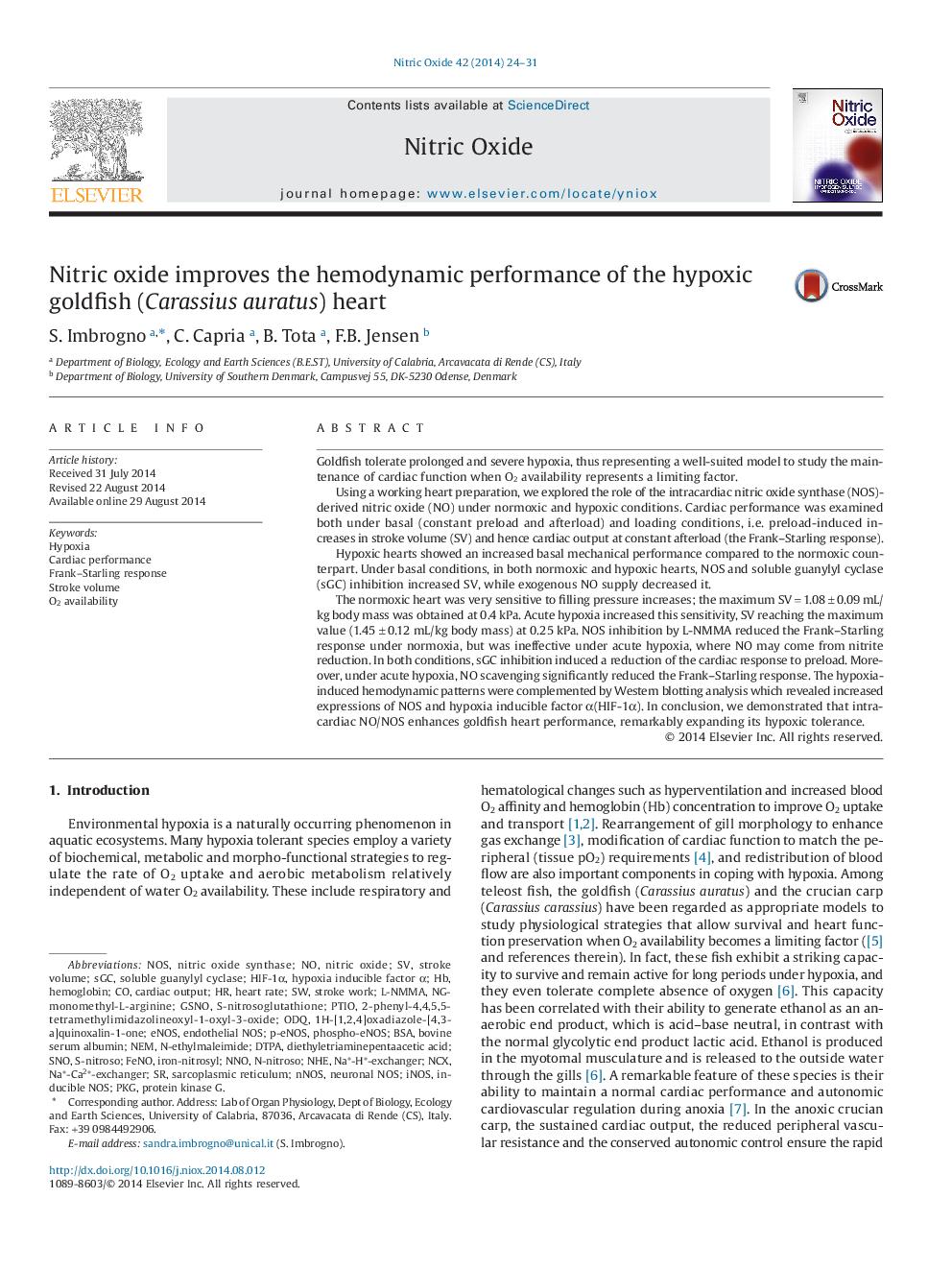| Article ID | Journal | Published Year | Pages | File Type |
|---|---|---|---|---|
| 8345270 | Nitric Oxide | 2014 | 8 Pages |
Abstract
The normoxic heart was very sensitive to filling pressure increases; the maximum SVâ=â1.08â±â0.09âmL/kg body mass was obtained at 0.4 kPa. Acute hypoxia increased this sensitivity, SV reaching the maximum value (1.45â±â0.12âmL/kg body mass) at 0.25 kPa. NOS inhibition by L-NMMA reduced the Frank-Starling response under normoxia, but was ineffective under acute hypoxia, where NO may come from nitrite reduction. In both conditions, sGC inhibition induced a reduction of the cardiac response to preload. Moreover, under acute hypoxia, NO scavenging significantly reduced the Frank-Starling response. The hypoxia-induced hemodynamic patterns were complemented by Western blotting analysis which revealed increased expressions of NOS and hypoxia inducible factor α(HIF-1α). In conclusion, we demonstrated that intracardiac NO/NOS enhances goldfish heart performance, remarkably expanding its hypoxic tolerance.
Keywords
NHEHIF-1αDTPAS-nitrosoglutathionePKGNCXSGCSNOFeNOGSNONG-monomethyl-L-arginineODQL-NMMAphospho-eNOsnNOP-eNOShypoxia inducible factor αnNOSeNOSiNOSN-ethylmaleimideNOSBSAneuronal NOSinducible NOSPTIObovine serum albuminendothelial NOSCardiac outputstroke volumeSoluble guanylyl cyclaseSarcoplasmic reticulumHeart rateCardiac performanceNEMNitric oxidenitric oxide synthaseHemoglobinHypoxiaStroke work
Related Topics
Life Sciences
Biochemistry, Genetics and Molecular Biology
Biochemistry
Authors
S. Imbrogno, C. Capria, B. Tota, F.B. Jensen,
